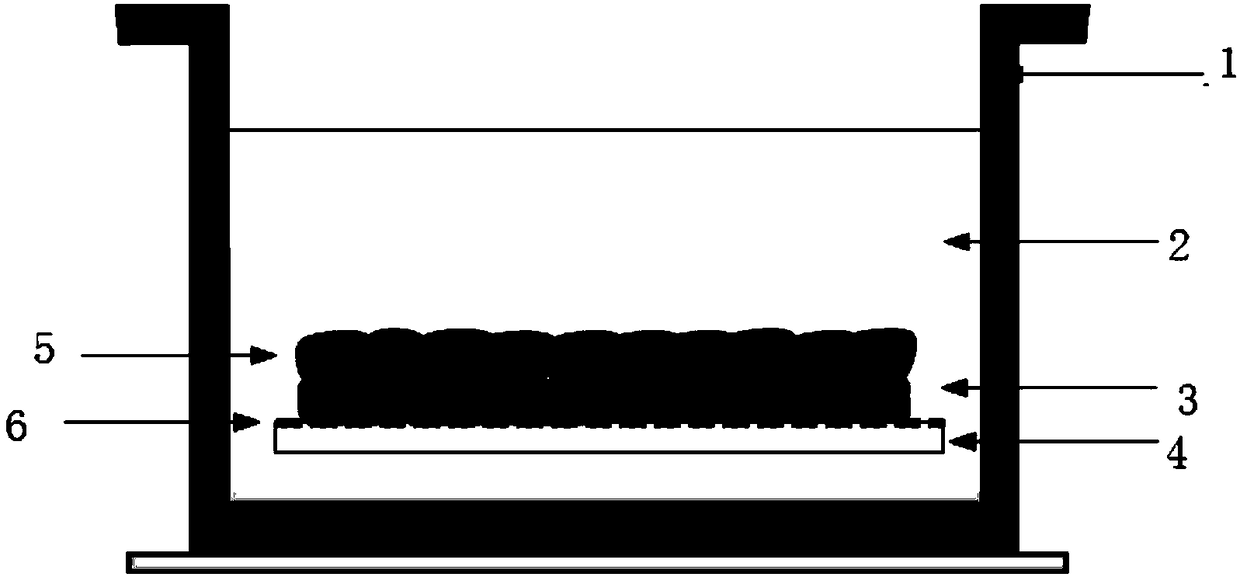Establishment and applications of three-dimensional liver model based on qualitative filtration paper
A qualitative filter paper and model technology, applied in the field of tissue engineering and drug research, to achieve reasonable design, high albumin expression level, and maintain the effect of liver cell structure and function
- Summary
- Abstract
- Description
- Claims
- Application Information
AI Technical Summary
Problems solved by technology
Method used
Image
Examples
Embodiment 1
[0039] Three-dimensional liver models were constructed using qualitative filter paper.
[0040] as follows figure 1 and figure 2 As indicated, the filter paper was made into a 24-well or 96-well disc with a hole puncher, and after autoclaving, it was coated with 100ug / ml type I rat tail collagen overnight, and then washed with PBS to remove the residual Collagen, press HUVEC cells in 0.4X10 6 Cells per ml were seeded in a 24-well plate, and 500ul of cell suspension was added to each well. After culturing on paper for two days, the original culture medium was sucked off, and hiHep cells were inoculated according to the ratio of HUVEC / hiHep=1:1~2. , change the hiHep medium and continue the culture, so as to obtain a three-dimensional liver model with better hepatocyte function. Afterwards, the medium was changed every other day and the cell culture medium was collected for subsequent detection of albumin and urea.
[0041] The model is designed by figure 2 The three-dimensi...
Embodiment 2
[0045] Use this 3D liver model to study hepatocyte-specific functions.
[0046] The three-dimensional model was established according to the above-mentioned method, and the medium was changed every other day during the culture period. From the hepatocyte inoculation incubation until the 14th day, the hepatocyte function reached a good state. Monolayer hepatocyte culture was used as a control, and the lipid and glycogen synthesis of hepatocytes and the expression level of albumin were detected. The three-dimensional liver model cultured for 14 days was washed once with warm PBS, fixed with 4% PFA at room temperature for 15 minutes, washed three times with PBS, and oil red O working solution (oil red: deionized water = 3:2) was added. Stain at 37 degrees for about 20 minutes, decolorize, rinse with 75% alcohol or 60% isopropanol to remove excess dye, then rinse with PBS, and observe the lipid synthesis under a microscope. Use the same fixation method as above to fix and culture...
Embodiment 3
[0049] The three-dimensional liver model was used to study its cell phenotype and liver function during long-term culture in vitro.
[0050] The three-dimensional liver model was also established according to the aforementioned method, and the medium was changed every other day during the culture period, and the liver tissue morphology in the three-dimensional model was observed on the 7th day, the 31st day, the 60th day, and the 103rd day respectively. Since the liver cells themselves emit green fluorescence, the result ( Figure 6 ) showed that the cells had formed dispersed small cell aggregates on the 7th day, and large microstructures had formed on the 31st day, presenting a three-dimensional shape. The cultured three-dimensional liver model is more stable than the three-dimensional liver model alone, and the cell shape is better maintained.
[0051] The three-dimensional liver model was also established according to the above method. During the culture period, the mediu...
PUM
 Login to View More
Login to View More Abstract
Description
Claims
Application Information
 Login to View More
Login to View More - R&D
- Intellectual Property
- Life Sciences
- Materials
- Tech Scout
- Unparalleled Data Quality
- Higher Quality Content
- 60% Fewer Hallucinations
Browse by: Latest US Patents, China's latest patents, Technical Efficacy Thesaurus, Application Domain, Technology Topic, Popular Technical Reports.
© 2025 PatSnap. All rights reserved.Legal|Privacy policy|Modern Slavery Act Transparency Statement|Sitemap|About US| Contact US: help@patsnap.com



